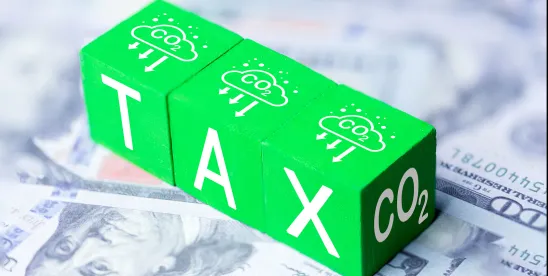On Friday, July 4, President Trump signed into law the budget reconciliation bill H.R. 1. (the Act), formerly known as or nicknamed the “One Big Beautiful Bill Act”. Among other substantial changes to the tax code, the Act significantly reduces tax incentives for clean energy practices, terminating many of the environmental and clean energy tax credits introduced by the Inflation Reduction Act (IRA) of 2022. Many of those credits were scheduled to remain in effect until 2032.
The Act impacts clean energy tax credits in two key ways:
- It accelerates the expiration and phasing out of certain credits.
- It prohibits specified foreign entities, foreign-influenced entities, and domestic entities that receive material assistance from specified foreign entities from claiming certain credits.
Credit Phase-Outs
Taxpayers currently engaged in clean energy projects should be aware of critical deadlines to begin construction or place projects in service to remain eligible for tax credits.
For example, solar and wind facilities must either:
- Begin construction within one year of the Act’s enactment (i.e., before July 4, 2026), qualifying for a four-year continuity safe harbor; or
- Be placed in service by December 31, 2027, to remain eligible for the Clean Electricity Production or Clean Electricity Investment credits before those credits are phased out.
These new deadlines do not apply to energy storage technologies, including those placed in service at wind or solar facilities, or certain other qualified technologies.
The Act also introduces a tiered adjustment for the domestic content bonus threshold under the Investment Tax Credit (ITC), similar to the structure used for the Production Tax Credit (PTC).
Foreign Entity Restrictions
In addition to timing changes, the Act imposes new limitations on foreign involvement in clean energy projects.
Many tax credits are now unavailable to “specified foreign entities” and “foreign-influenced entities.” Specified foreign entities include:
- Chinese military companies
- Entities of concern identified under the William M. Thornberry National Defense Authorization Act
- Entities listed in Public Law 117-78
- Entities specified under Section 154(b) of the National Defense Authorization Act
- Foreign-controlled entities.
A foreign-influenced entity includes an entity under the direct authority of, or partially owned by, a specified foreign entity.
Summary of Key Energy Tax Credit Changes
Clean Vehicle Credits:
- Previously-Owned Clean Vehicle Credit (25E), Clean Vehicle Credit (30D), and Qualified Commercial Clean Vehicles Credit (45W) expire for vehicles acquired after September 30, 2025, previously scheduled to expire on December 31, 2032.
- Alternative Fuel Vehicle Refueling Property Credit (30C) expires on June 30, 2026, previously scheduled to expire on December 31, 2032.
Home Improvement Credits:
- Energy Efficient Home Improvement Credit (25C) expires for property placed in service on or after December 31, 2025, previously scheduled to expire on December 31, 2032.
- Residential Clean Energy Credit (25D) expires for expenditures made after December 31, 2025, previously scheduled to expire on December 31, 2034.
- New Energy Efficient Home Credit (45L) expires for homes acquired after June 30, 2026, previously scheduled to expire on December 31, 2032.
Electricity Credits:
- Clean Electricity Production Credit (45Y) phases out beginning in 2032, previously scheduled to phase out later in 2032 or the year in which greenhouse gas emissions from electricity production were reduced to a specified level.
- Clean Electricity Investment Credit (48E) prohibits facilities from receiving material assistance from prohibited foreign entities if construction begins after December 31, 2025.
- Wind and solar facilities must begin construction by July 4, 2026, or be placed in service by December 31, 2027, to remain eligible.
- Clean Electricity Production Credit and Clean Electricity Investment Credit are unavailable to specified foreign entities and foreign-influenced entities.
Nuclear and Hydrogen Credits:
- Zero Emission Nuclear Power Production Credit (45U) is unavailable to specified foreign entities; eligibility ends for foreign-influenced entities two years after enactment.
- Clean Hydrogen Production Credit (45V) expires for facilities with construction beginning on or after January 1, 2028, previously scheduled to expire on January 1, 2033.
Manufacturing Credits:
- Advanced Manufacturing Production Credit (45X) phases out beginning with critical minerals produced after December 31, 2030. Production of metallurgical coal produced after December 31, 2029, and production of wind energy components produced and sold after December 31, 2027, are not eligible for the credit.
- The credit is unavailable to specified foreign entities and foreign-influenced entities. Eligible components used in a product sold before January 1, 2030, cannot receive material assistance from prohibited foreign entities.
Clean Fuel Credits:
- Clean Fuel Production Credit (45Z) is extended to fuel sold on or before December 31, 2029, previously scheduled to expire on December 31, 2027. The credit is unavailable for fuel derived from feedstock sourced outside the U.S., Mexico, or Canada starting December 31, 2025. It is also unavailable to foreign entities on that date and two years after enactment for foreign-influenced entities.
Carbon Capture Credits:
- Carbon Oxide Sequestration Credit (45Q) is unavailable to prohibited foreign entities and foreign-influenced entities.
On July 7, 2025, President Trump issued an Executive Order requiring the Treasury and Interior Departments to strengthen provisions in the Act that eliminate tax credits for solar and wind energy projects. Specifically, the order requires the Treasury Department to “issue new and revised guidance… to ensure that policies concerning the ‘beginning of construction’ are not circumvented.” Moving forward, developers should carefully document construction start dates on solar and wind projects to ensure eligibility for ITC and PTC tax credits.









 />i
/>i

